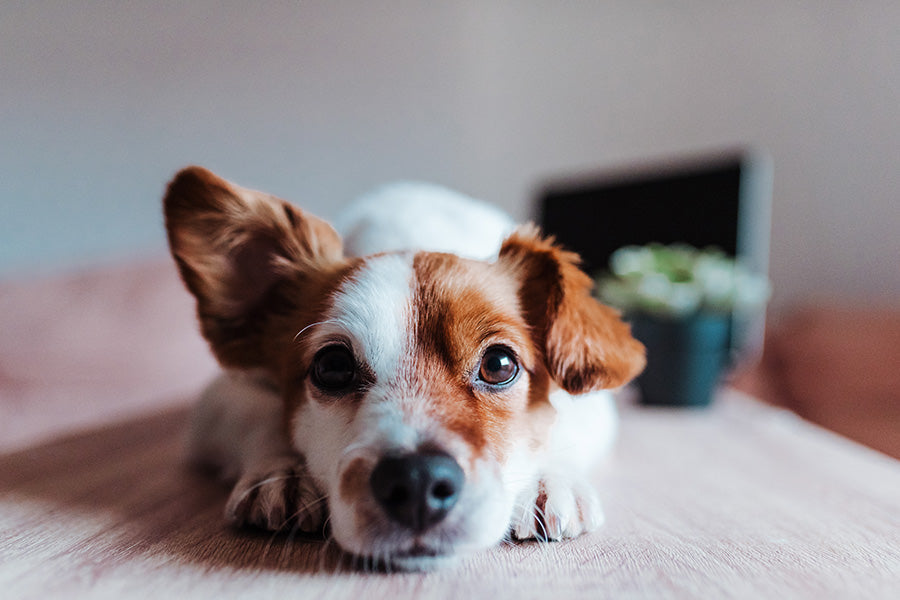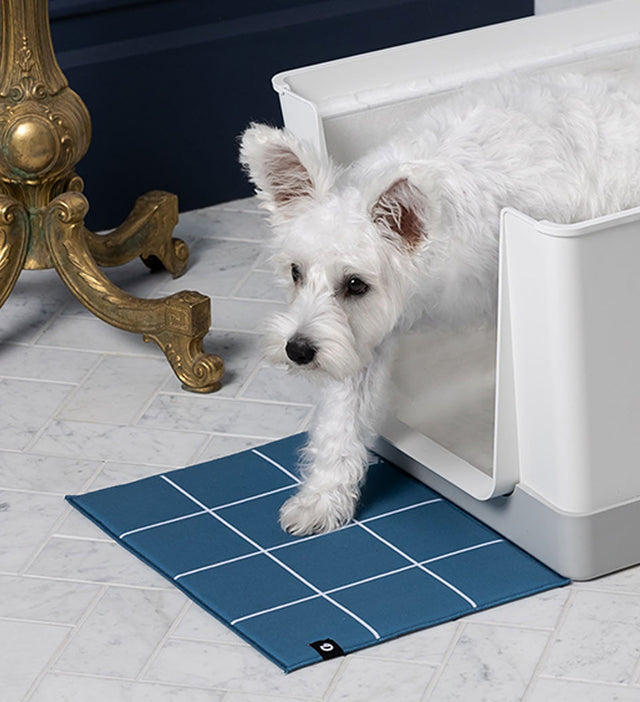Simplifying Dog Training: Tips for Wee Pads

Training your dog with wee pads can be a game-changer for pet owners.
It's a practical solution for indoor dog training, especially for puppies. Wee pads offer a convenient way to manage your dog's potty needs.
This guide will walk you through the process of using wee pads effectively. You'll learn how to set up a successful puppy potty training routine. We'll cover everything from choosing the right pads to troubleshooting common challenges.
Consistency and patience are key to successful training. With the right approach, you can make housebreaking a positive experience for both you and your pet. Let's dive into the world of wee pad training and discover how it can enhance your dog's quality of life.
Understanding Wee Pads and Their Benefits
Wee pads, often referred to as puppy training pads, are absorbent pads designed for indoor dog training. They're particularly helpful for puppies and small breeds. These pads make managing accidents easier, reducing stress for both pets and owners.
The primary benefit of wee pads is their convenience. They can be placed anywhere in your home, offering flexibility in setting up a potty area. This is especially useful in apartments or during inclement weather. Wee pads help establish a designated spot for your dog's potty needs, which aids in consistent training.
Here's why wee pads can be beneficial:
-
Flexibility: Ideal for various home setups.
-
Ease of Use: Simple cleanup process.
-
Controlled Training Environment: Promotes regular habits.
-
Stress Reduction: Fewer messes to manage.
Using wee pads not only prevents flooring damage but can also be an introduction to indoor dog training. They're a great tool for laying a solid foundation for your dog's potty habits.
Preparing for Puppy Potty Training: What You’ll Need
Before you start the training process, make sure you have all the necessary supplies ready. Having everything in place ensures a smooth and effective transition for both you and your furry friend. It’s all about creating a comfortable environment that supports learning.
Firstly, invest in quality puppy training pads. Choose ones that match your pup’s size and the absorbency you need. Look for pads with leak-proof backing to protect your floors. You might also consider ones with attractant scents to encourage use.
Additionally, equip yourself with treats or rewards to reinforce good behavior. Decide on a specific command word to use consistently during training. Here’s a handy checklist to get you started:
-
Puppy Training Pads: Choose absorbent, appropriate size.
-
Treats: For positive reinforcement.
-
Command Word: Consistent cue for training.
-
Cleaning Supplies: For quick accident cleanups.
Being prepared helps build a positive potty training experience, setting your pup up for success from the outset.

Step-by-Step Guide to Dog Training with Wee Pads
Starting with wee pad training can seem daunting, but a structured approach makes it manageable. Follow these steps for a smooth training experience.
Step 1: Establish a Routine Routine is crucial in puppy potty training. Choose specific times during the day to place your puppy on the wee pad. Consistency helps your dog understand when it's time to go.
Step 2: Designate a Spot Identify a specific spot in your home for the wee pad. This designated area helps your pup associate the spot with potty time, reinforcing the routine.
Step 3: Use a Command Word Introduce a clear command word or phrase during potty time. This signals to your dog what you expect. Keep the command short and consistent each time you direct your pup to the pad.
Step 4: Positive Reinforcement Praise and reward your dog immediately after using the pad correctly. Whether with treats or affection, positive reinforcement encourages continued good behavior.
Command Word Tips:
-
Make it short and clear, like "Go potty."
-
Use a happy but firm tone.
-
Stay consistent with your choice of words.
Step 5: Monitor and Adjust Watch for your dog's signs they need to go, such as sniffing or circling. Promptly guide them to the wee pad. Adjust the routine as needed based on your pet’s progress and comfort.
Step 6: Clean Accidents Promptly Accidents happen, especially during early training days. Clean up any mishaps immediately using non-toxic cleaners. This prevents your dog from returning to the same spot, keeping the wee pad the designated area.
Positive Reinforcement Ideas:
-
Use treats your dog loves.
-
Offer verbal praise and belly rubs.
-
Reward your dog right after success.
The transition might take time, but with patience and consistency, you'll help your dog master using wee pads. Celebrate small achievements along the way to make training a joyful journey for both you and your pet.
Housebreaking Tips for Success
Successfully housebreaking your dog with wee pads requires dedication and a few clever strategies. Here are some tips to ensure a smooth process.
Consistency is Crucial
Maintaining a consistent feeding schedule is vital. This predictability helps you anticipate when your dog needs to go, aligning potty times with their routine. Consistency simplifies the training process.
Monitor Behavior
Observing your dog's behavior is key. Watch for signs they need to relieve themselves, such as whining or pacing. Promptly guide them to the wee pad when you notice these cues.
Effective Communication
Use a calm, encouraging tone during training. Consistently using the same command words reinforces the desired behavior, enhancing your dog's understanding over time.
Celebrate Success
Every small victory deserves recognition. Reward your dog immediately after they use the pad correctly. Positive reinforcement reinforces good habits and strengthens your bond.
Key Tips for Housebreaking:
-
Stay patient and empathetic.
-
Avoid punishment for accidents.
-
Use rewards to motivate.
-
Establish a clear routine.
-
Monitor and adapt as needed.
With these housebreaking tips, your journey towards successful potty training can be both effective and rewarding. Embrace the process and enjoy watching your furry friend grow and learn.

Troubleshooting Common Challenges
Even with the best intentions, dog training with wee pads can have its hurdles. Understanding common problems will help you address them swiftly.
Addressing Frequent Accidents
If your dog frequently misses the pad, reassess its location. Make sure the pad is placed in an easily accessible and quiet spot. Reducing distractions nearby can also help improve your pup's focus.
Handling Lack of Interest
Some dogs may show little interest in using the training pad. In this case, try an attractant spray specifically designed for puppy training pads. This scent can naturally guide them to the right spot and spark their interest.
Dealing with Reluctance
A dog might be hesitant or fearful of the pad's texture or smell. Experiment with different types of pads, as some dogs prefer specific textures or scents over others.
Quick Solutions for Common Challenges:
-
Relocate the pad for better access.
-
Use attractants for reluctant learners.
-
Experiment with various pad textures.
-
Remove distractions near the potty area.
-
Be patient and remain encouraging.
By tackling these challenges proactively, you’re setting both yourself and your dog up for success. Remember, patience and adaptability are your best allies.
Transitioning from Wee Pads to Outdoor Potty Training
Once your dog is reliably using the wee pads, it's time to consider transitioning to outdoor potty training. This shift requires patience and consistency to ensure success.
Begin by gradually moving the wee pad closer to the door leading outside. This helps your dog associate the door with potty time, easing the transition outdoors. Consistent reinforcement will help them understand where to go next.
With the pad near the door, start taking your dog outside to the designated spot at regular intervals. Use the same command word you used for indoor training. Reward them immediately after they successfully potty outdoors, reinforcing the new behavior.
Steps for a Smooth Transition:
-
Move the wee pad closer to the exit gradually.
-
Use familiar command words during the transition.
-
Reward outdoor successes immediately.
-
Monitor your dog's signs and take them out promptly.
-
Maintain regular potty breaks.
By following these steps, you help your dog adapt to the outdoor environment while building on their indoor training foundation.
Ethical and Eco-Friendly Puppy Training Pads
As a conscientious pet owner, you might be concerned about the environmental impact of disposable puppy training pads. Luckily, there are eco-friendly options available that align with a sustainable lifestyle. These products use biodegradable materials, reducing the ecological footprint while still providing effective results for indoor dog training.
When selecting eco-friendly pads, consider those made from recycled materials or featuring reusable designs. Investing in sustainable options can be both cost-effective and beneficial for the planet, offering peace of mind for environmentally conscious pet owners.
Considerations for Eco-Friendly Training Pads:
-
Look for biodegradable materials.
-
Explore pads made from recycled content.
-
Consider washable and reusable pad options.
Choosing ethically produced training pads ensures your pet’s potty training journey contributes positively to the environment and reflects responsible pet ownership values.
Frequently Asked Questions about Wee Pad Training
Pet owners often wonder how long it might take for their dogs to become fully trained with wee pads. Every dog is different, but most puppies can learn to use wee pads consistently within a few weeks of training.
Another common question is whether older dogs can be trained to use wee pads. The answer is yes! While older dogs may take longer to adapt, with patience and persistence, they can successfully learn indoor potty habits.
Here's a helpful list to address your most pressing questions:
-
How long does training typically take?
-
Can older dogs use wee pads effectively?
-
Do some dogs prefer a specific type of pad?
-
What if my dog still has frequent accidents?
Understanding these aspects can ease the training process, fostering success and harmony between you and your pet.
Final Thoughts: Building a Positive Potty Training Experience
Training your dog with wee pads is a journey of patience and positivity. Remember, each dog learns at their own pace. Celebrate every small achievement and progress made along the way. Your consistent efforts and encouragement will make a significant difference.
While challenges may arise, keep your approach positive and nurturing. This fosters trust and strengthens the bond between you and your pet. Patience and understanding will help transform potty training into a rewarding experience for both. Embrace this process as an opportunity to grow together and enhance your living environment.
For more helpful insights and information, check out our related blog posts here:
7-Day Plan to Potty Train Your Puppy



